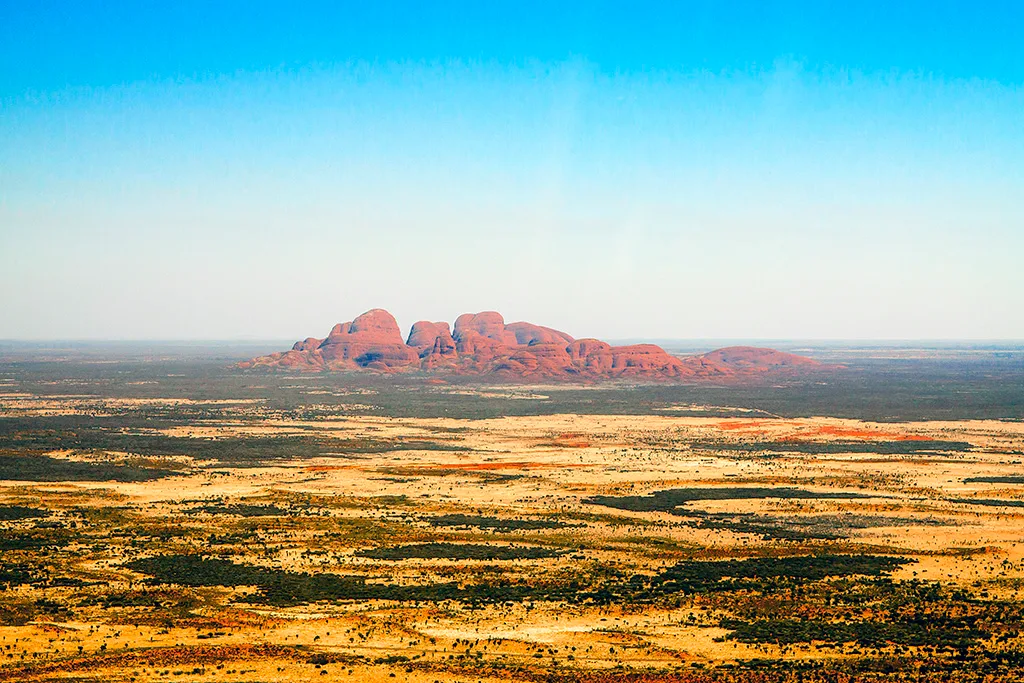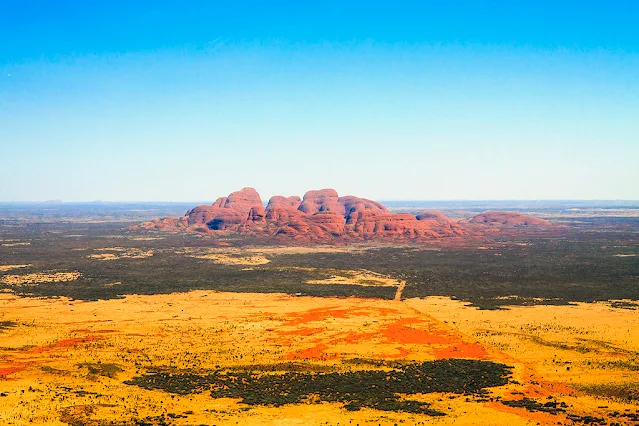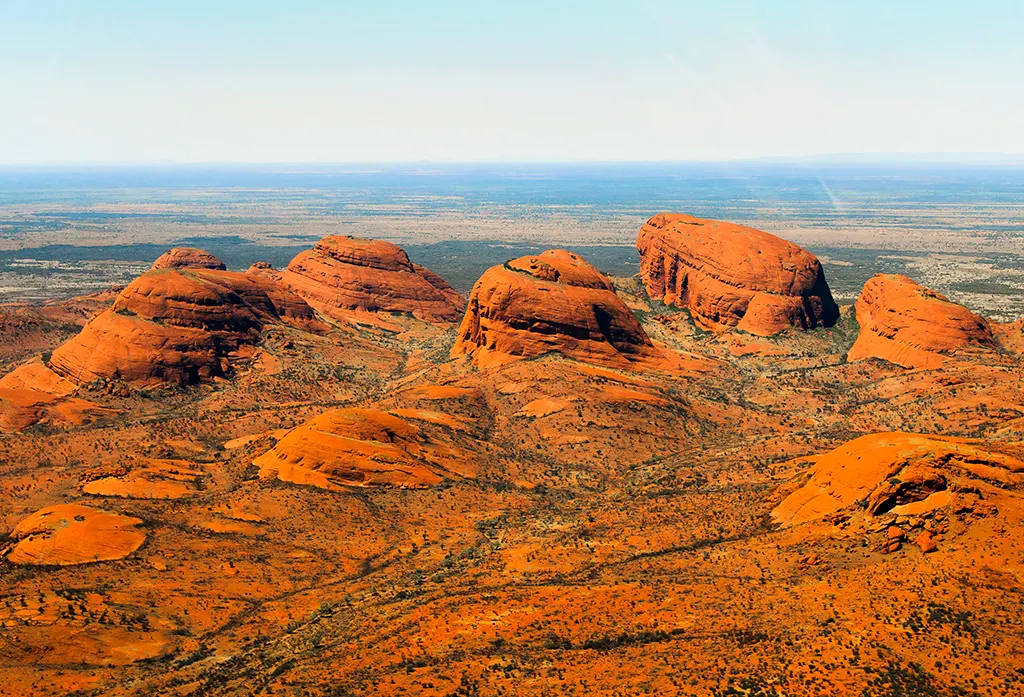 |
Kata Tjuta National Park could have become the central attraction of this area, if not for the Uluru Rock, Australia. As a rule, tourists come here precisely because of her, and this is not entirely correct: admiring the rock, they completely forget about the magnificent national park with sandstone rocks, in no way inferior to the famous Uluru.
 |
| Kata Tjuta Australia |
Kata Tjuta Park is located 50 kilometers from Uluru Cliff. The park is operated by the Aboriginal tribes living here in conjunction with the Australian federal government. Aborigines are happy to work as guides and guides for tourist groups.
 |
| Kata Tjuta Australia |
The name "Kata-Tjuta" of the area was also given by the natives: in their dialect it means "many heads". A very symbolic name - 36 domed rocks and really look like someone's head.
Since 1987, the park has been a UNESCO World Heritage Site.
 |
| Kata Tjuta Australia |
You should know
The most famous hill in this area is the Uluru Rock, which does not belong to the territory of Kata Tjuta. Olga Rock, which is part of the park, is 200 meters higher than Uluru. This often confuses and surprises tourists.
 |
| Kata Tjuta Australia |
When to visit?
Uluru Kata Tjuta National Park in Australia is best visited in the summer - winter nights in the desert are very cold. But if you are not afraid of the cold, you can come in winter. At this time, when the rainy season ends, numerous trees begin to bloom in the park.
 |
| Kata Tjuta Australia |
How to get there?
From Ellis Springs by car or bus - 400 kilometers.
 |
| Kata Tjuta Australia |
Do not miss!
- It is prohibited to climb the Kata Tjuta rocks. This is associated with a great danger when climbing: despite the fact that the peaks are smooth and rounded, steep slopes make it impossible to climb them.
- Moving from Kata Tjuta to Uluru, it is worth stopping on the road and admiring the views. On the horizon, the mountains look amazing! But the most “delicious” moment is at dawn.
- But you can climb the Uluru rock! There is a magnificent view of the park from there.
- The Anangu tribe lives in the eastern part of the park, so the entrance is closed to visitors. Therefore, when choosing a tourist route, pay attention to the "Valley of the Winds". It is a 7 km long circular trail through sandy hills. Climbing the hills, you can see the houses of the aborigines.
- Geologists claim that there was a sea about 500 million years ago. Today Kata Tjuta is a desert inhabited by extremely rare plants in Australia. A variety of eucalyptus, grevillea and acacia species grow here.